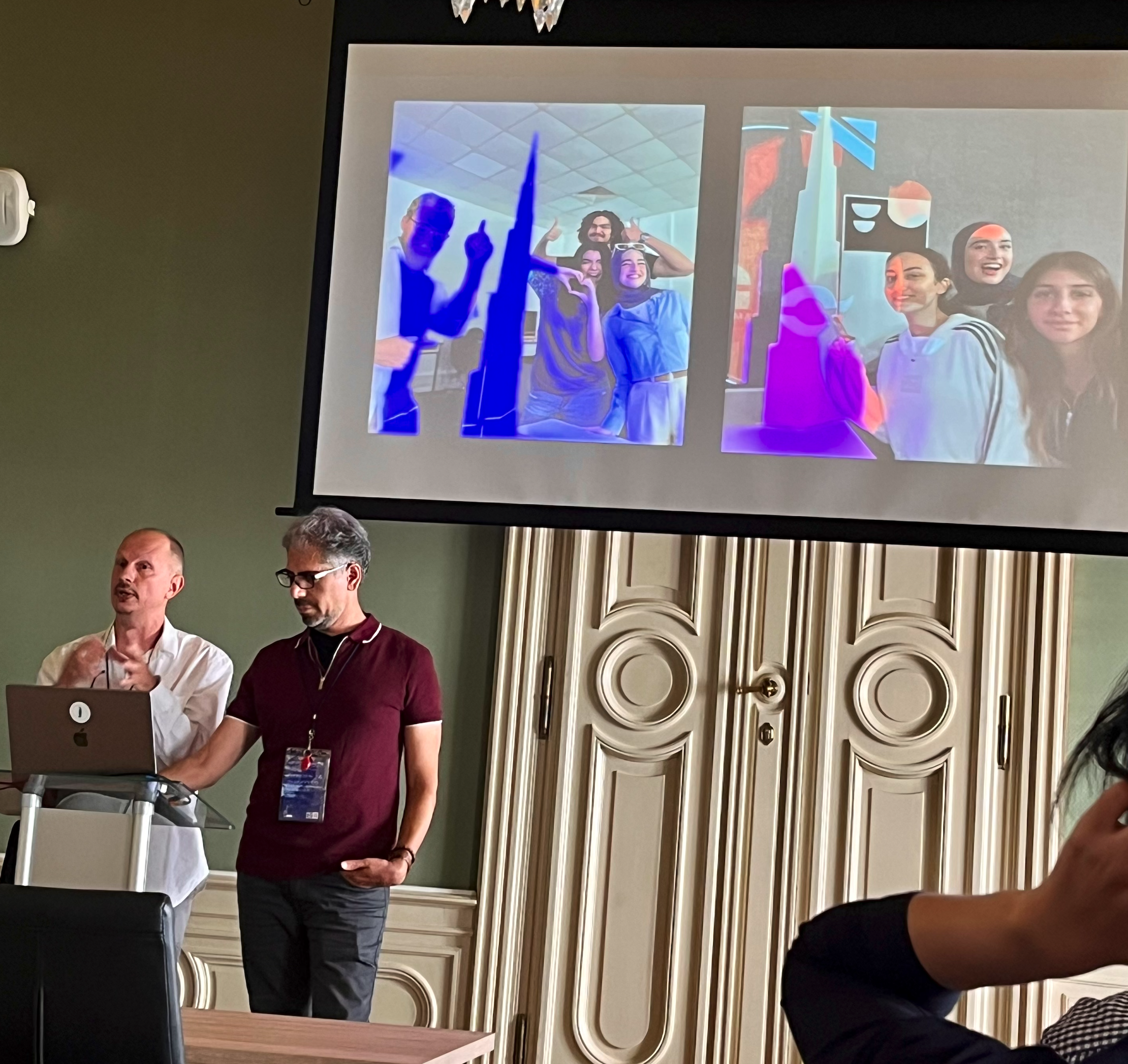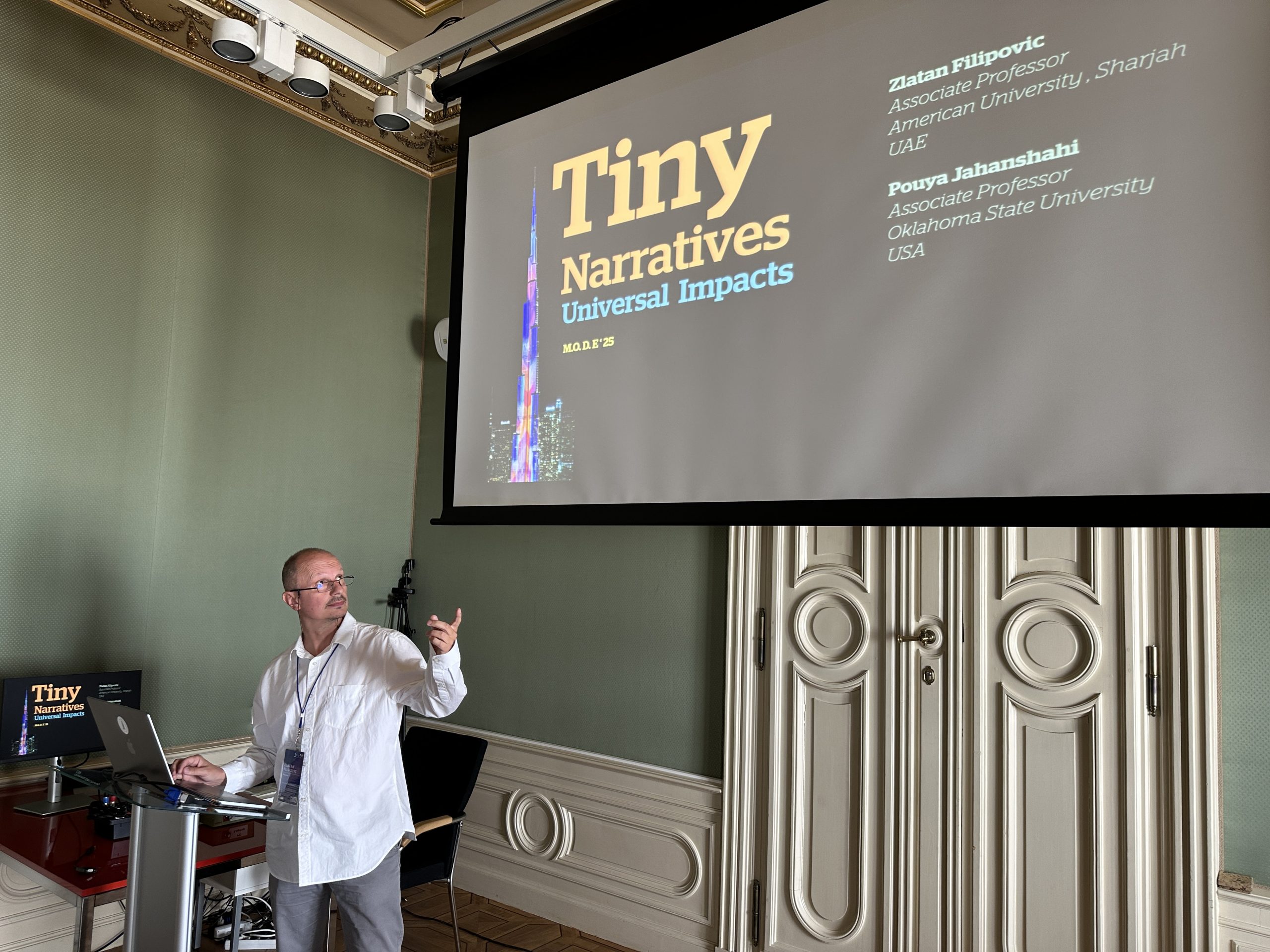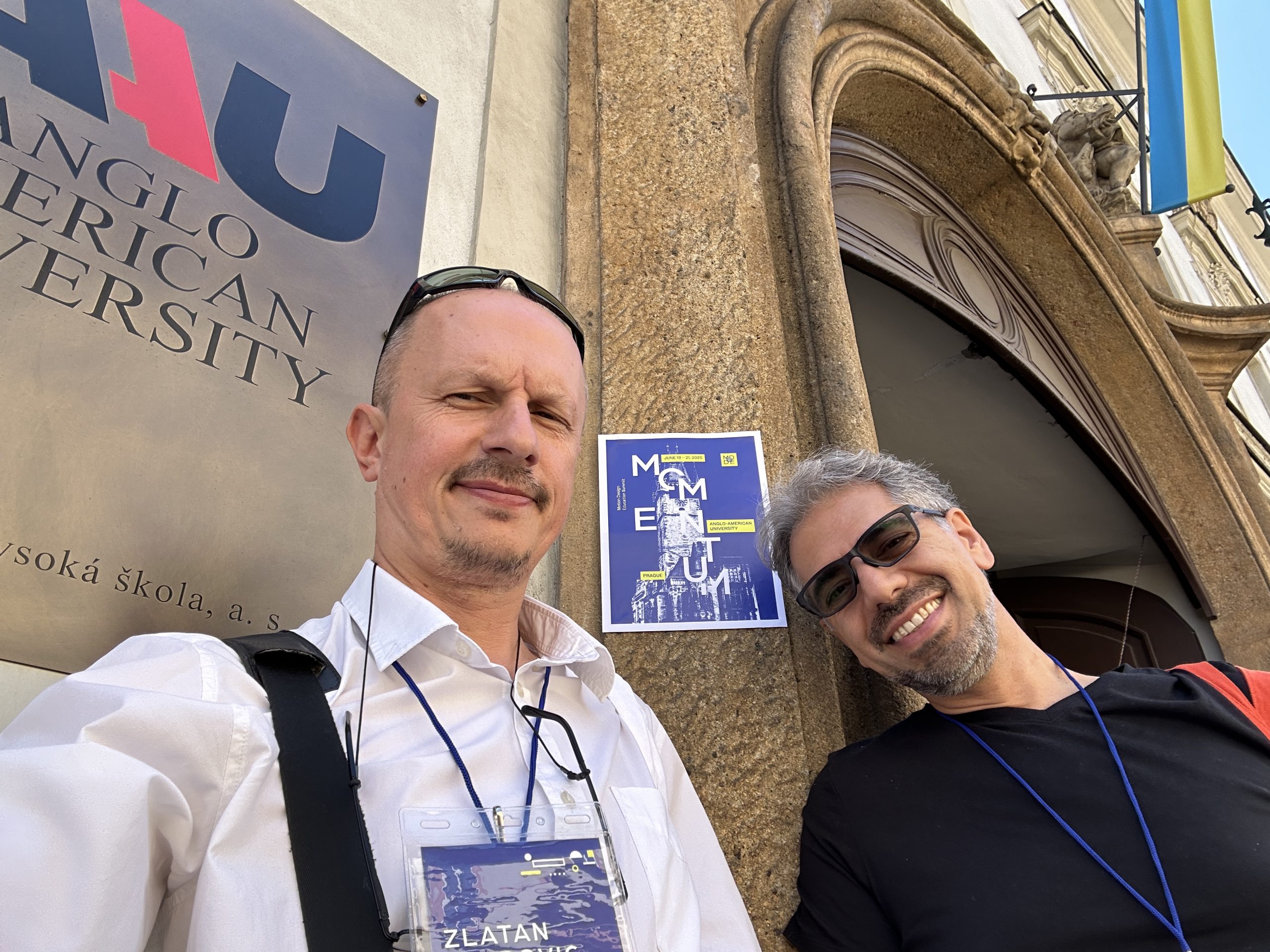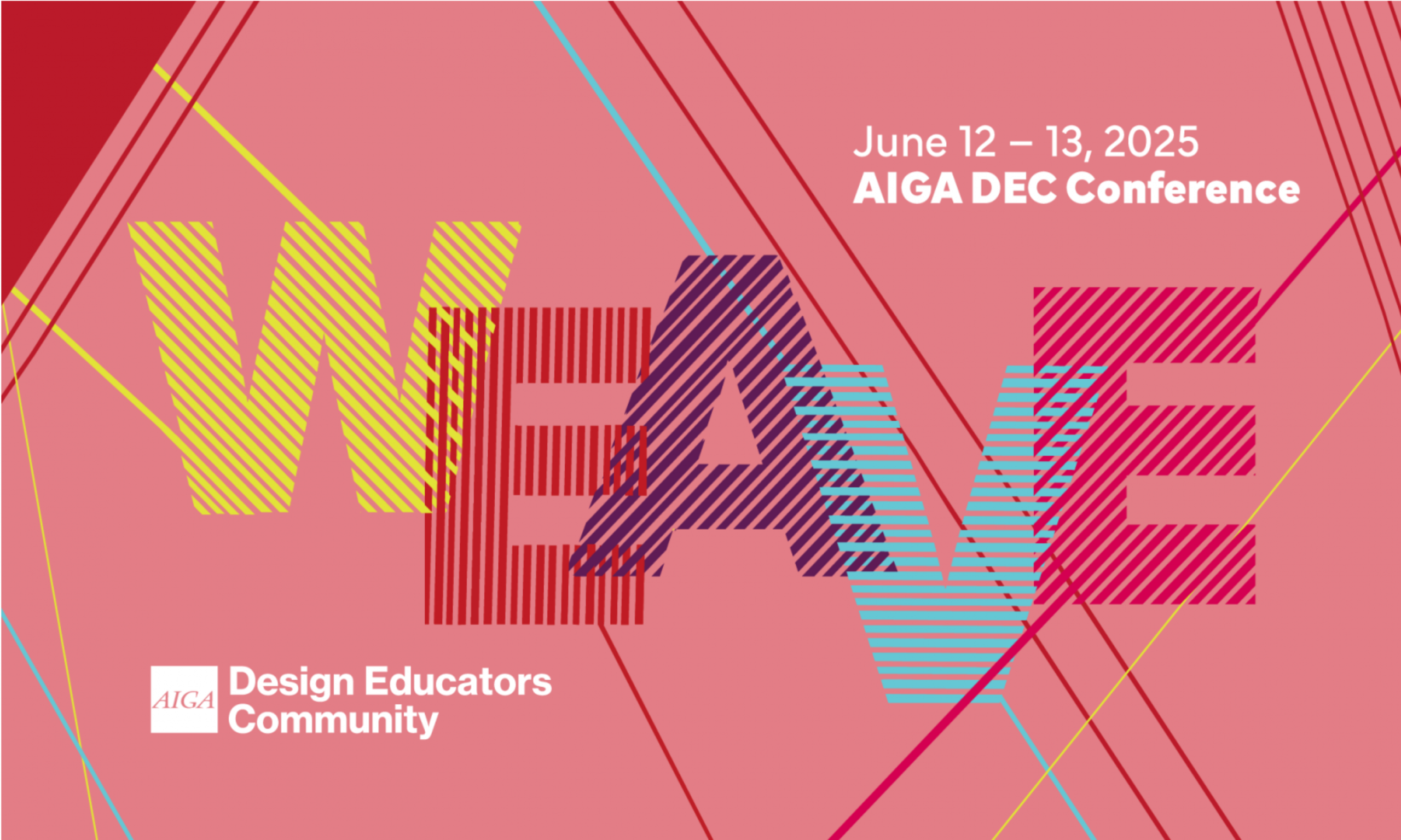Presented at MODE 25 at Anglo-American University in Prague, this session explored the power of small-scale narratives to create universal impacts on environmental issues and motion design pedagogy.
The focus was on translating student experiences, discussions and understanding of the energy, water and natural resources thoughtful use into motion design work formatted to be presented on the Media Facade of the burj Khalifa, largest media screen in the world.



This motion pedagogy collaborative project was developed and implemented with Associate Professor Pouya Jahanshahi from Oklahoma State University. The presentation demonstrated research-driven workflows that enhance teaching and learning. Emphasis was placed on reusable pipelines for motion design creation, narrative assembly, and dissemination, supporting curriculum development and student media mapping projects.
By engaging peer and community reviewers, the session highlighted the broader relevance of our academic work. MODE conference proceedings will publish our collaboration making it accessible to broader academic community. This scholarship provided students with real world professional experience designing and developing motion design work within the requirements of the actual burj Khalifa open call and template for motion desig work production..
